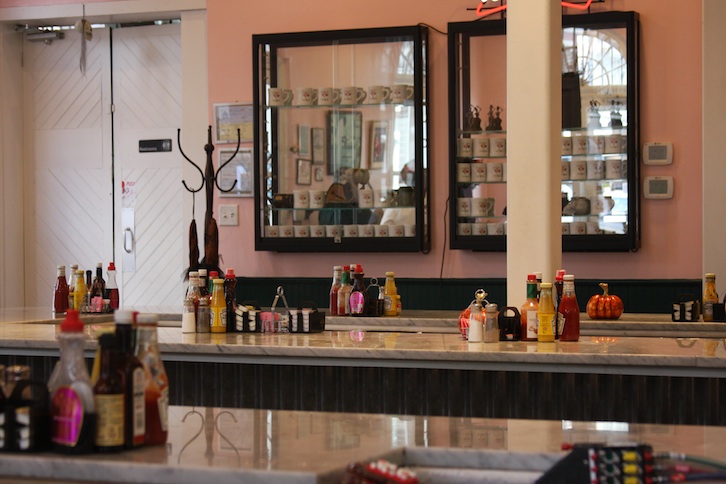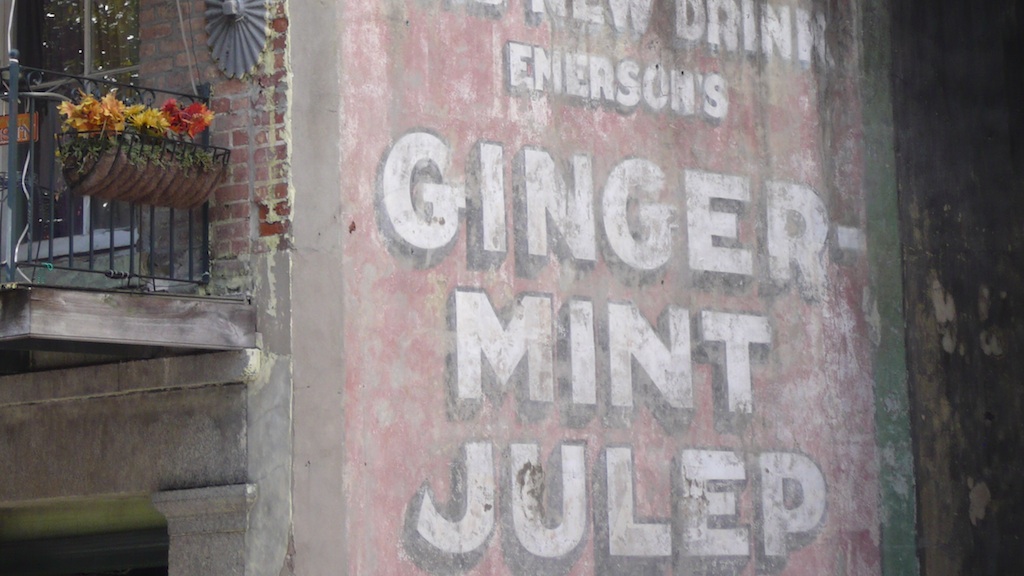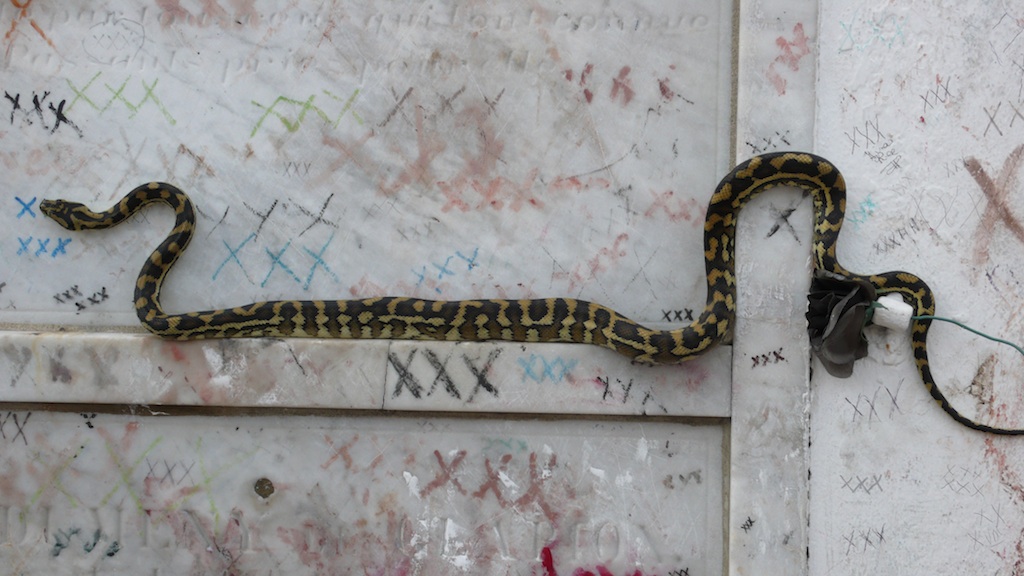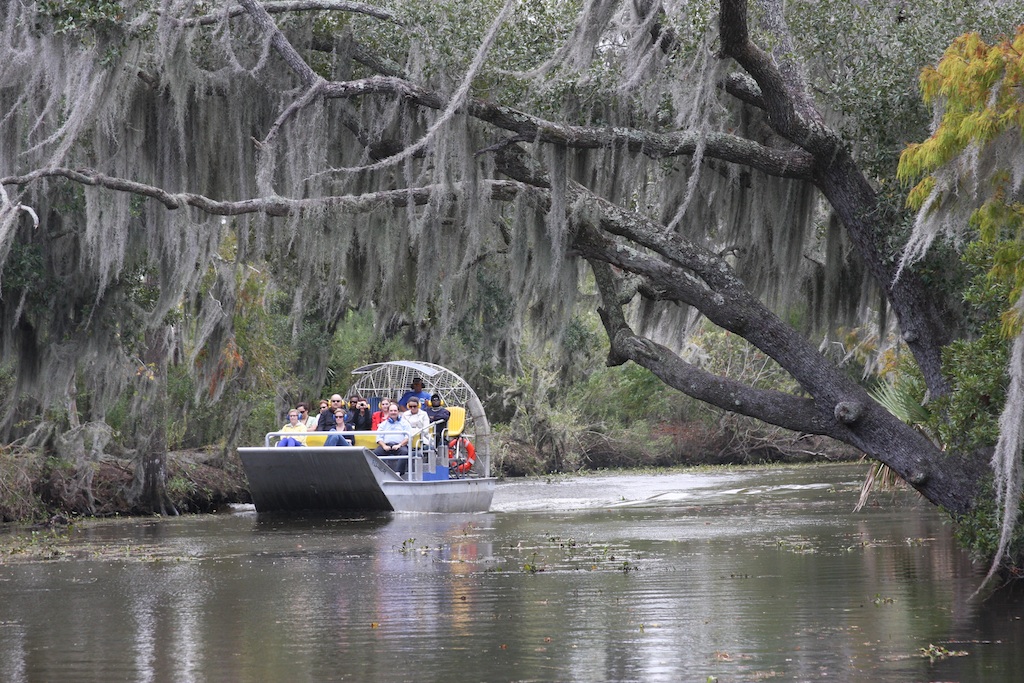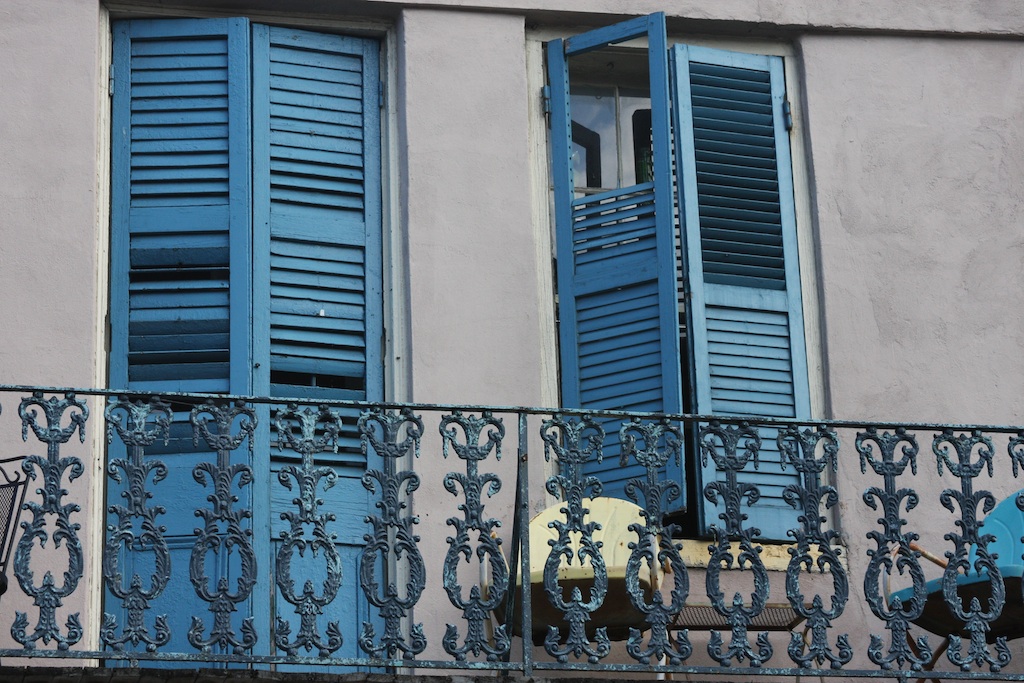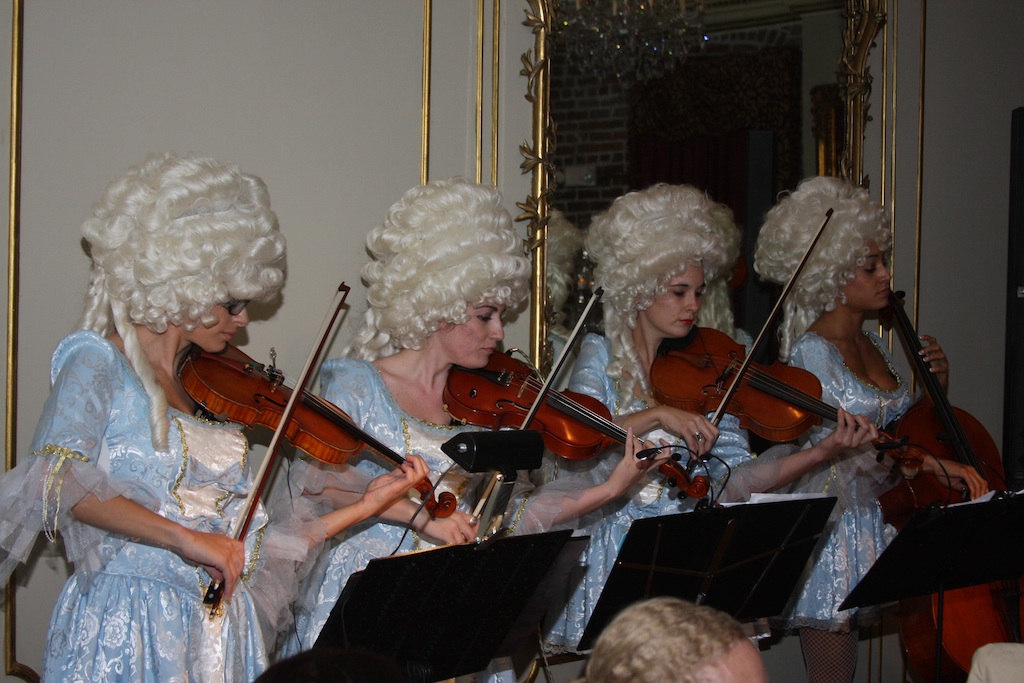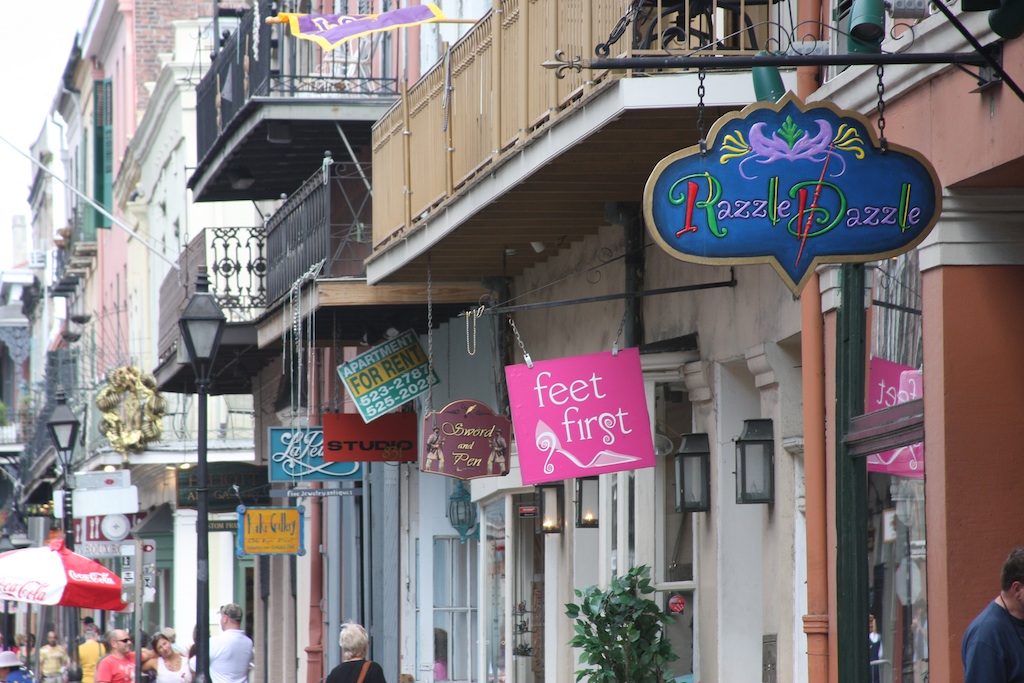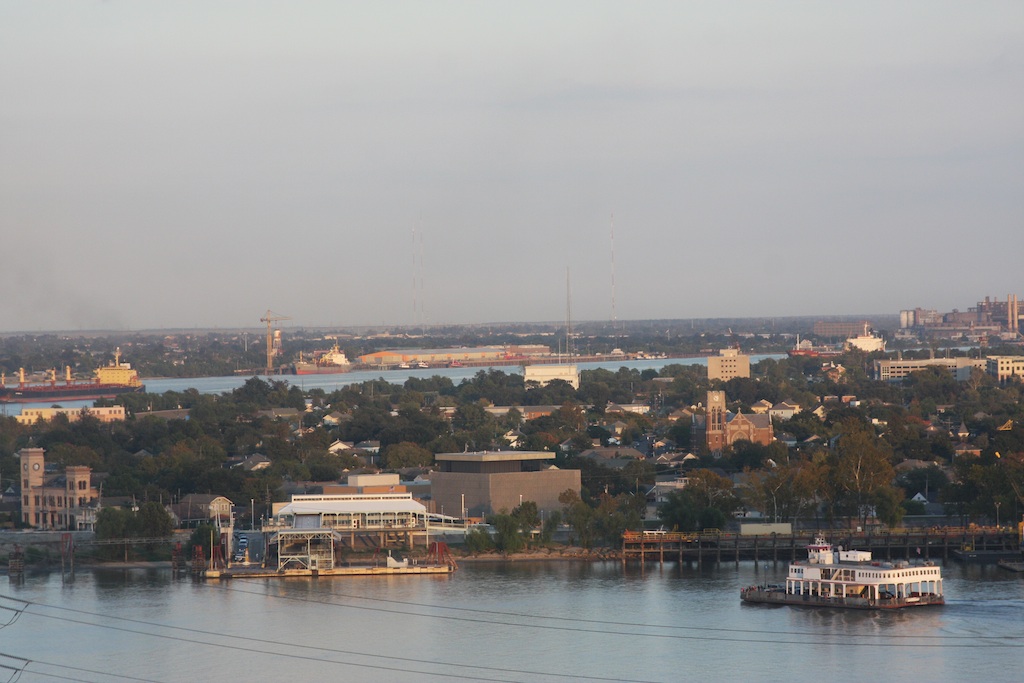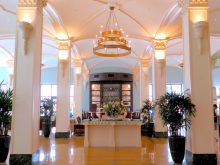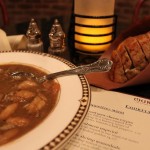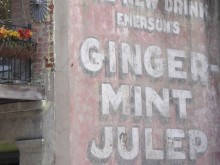Way back in 1947, in a Hollywood film called “New Orleans,” Miss Billie Holilday and Mr. Louis Armstrong performed a little ditty called “Do You Know What It Means to Miss New Orleans?” The answer to that lyrical query was given a poignant urgency in 2005 in the immediate aftermath of Katrina, when the nation – indeed, the world – shuddered to imagine a planet without one of the world’s most beloved cities.
Six years after the summer of Katrina (and Rita, which followed Katrina in September 2005), and a year after the BP oil spill in the summer of 2010, a visitor to the Big Easy might not be faulted for wondering what tragedy might next befall “The City That Care Forgot.”
Ah, but this is a city that gave birth to jazz, a music born of the blues. And this is the city that created the country’s oldest known cocktail, the Sazerac, which is also one of the most potent. And this is the city that gave us Tabasco sauce. In other words, New Orleans is a city made of strong stuff. Even the great fires of 1788 and 1794 couldn’t snuff out the spirit of New Orleans. New Orleans takes the burn – and eats it.
Perhaps it’s not surprising to find a street named Melpomene in the American Quarter of New Orleans. Initially the Muse of Singing, Melpomene later became the Muse of Tragedy, wearing a crown of cypress. Aficionados of Louisiana will note that the state tree is the bald cypress, while lovers of New Orleans might point out that Terpsichore Street runs parallel to Melpomene. The Muse of Dance alongside the Muse of Singing: it’s the spirit of New Orleans in two blocks. And furthermore, Terpsichore is often said to be the mother of the Sirens, which perhaps helps explain why so many people feel the call to New Orleans.
One of the top ten most-visited cities in the US, New Orleans was recently ranked second in the nation for gay friendliness (after San Francisco in the top spot). Long before Tennessee Williams wrote about Blanche Dubois and her “sensitive” poet husband, gay people were finding their way to the city celebrated for its openness and joie de vivre. As our guide, Miss Jeanie, told us upon our recent return to the Crescent City, “You love New Orleans – and she’ll love you right back.”
With its distinctive gumbo of disparate cultures, “The City That Care Forgot” was founded on hospitality, opening its arms to refugees and rebels, free people of color, Acadians and Haitian émigrés, francophones and hispanophones, as well as Creoles and Africans. The antecedents of jazz can be traced to Congo Square, where slaves gathered on Sundays to sing and dance (those girls Melpomene and Terpsichore again). Today, the city’s many music festivals, including JazzFest and VooDoo Experience, keep a similar Dionysian spirit alive.
Not unlike a classic beauty a little beyond her prime (think of Williams’ fragile heroines), elegant decay has always been one of New Orleans’ most alluring calling cards – and perhaps yet another reason why LGBT people have always been so fond of the city. The French Quarter houses the oldest gay bar in the United States, Café Lafitte in Exile, one of the watering holes frequented by both Williams and Truman Capote. New Orleans was Williams’ adopted home, while Capote used to quip that he was born in the Carousel Bar at the Hotel Monteleone.
One of the best ways to witness some of the city’s antebellum charms is to catch the St. Charles Avenue streetcar line and ride it past the Garden District, out to the Audubon Nature Institute, across the avenue from Tulane University. While the Desire streetcar line made famous by Williams’ play has been a bus line since 1948, the St. Charles trolley is the oldest continuously operating streetcar line in the United States. Meander back into town through the Garden District, past homes where you’ll swear you’ve just seen Blanche (either Dubois or Hudson) peering from behind an upstairs lace curtain.
Famous for its cemeteries, many of which are filled with above ground vaults (due to the city’s location below sea level), New Orleans honors its haunted past. According to some local historians, the rise of dead bodies after one of the city’s floods created such a stench that intoxication was the only means for locals to endure the noxious fumes. (Pause for laugh line here.) The oldest and most famous of New Orleans’ cemeteries is Saint Louis #1 (there are two others named for Louis within the city limits), site of the massive crypt of Marie Laveau, the renowned voodoo priestess.
Measuring only one square city block, Saint Louis #1 is a kind of black magic mini-version of Père Lachaise in Paris, with devotees of voodoo and their pythons lingering among the stone sarcophagi and tombs. Small wonder that the cemetery has figured in the works of Anne Rice.
To walk through the neighborhoods of New Orleans is to see the imprint of the city’s polyglot culture made manifest in numerous architectural styles. Apart from the widely-recognized ironwork of the French Quarter’s balconies, there are creole cottages and American townhouses, as well as mansions with double galleries, all repositories of a parade of immigrants bringing with them influences from the Caribbean, French-speaking Canada, as well as Spanish and French colonialism. As Miss Jeanie instructed us, if you say the word “Arcadian” three times quickly, it’s an easy slide into “Cajun,” which is as much a lesson in history as it is phonetics.
Without question, for many people, the boon from such a mélange of cultures is the resultant richness of New Orleans cuisine. Merely to hear a litany of New Orleans’ culinary specialties – gumbo and jambalaya, po’boy and muffuletta, red beans and rice, shrimp creole, oysters Rockefeller, bread pudding, beignets, and bananas Foster – is to find your tongue hanging “out your mouth,” as they say.
Late one evening, having survived a swamp tour through the Louisiana bayou, where we learned three folkloric synonyms for the Spanish moss hanging from trees (“Spanish beard,” “French wig,” and “tree hair”), we found ourselves in Lafayette Square at the base of the statue of Benjamin Franklin. The second oldest park in New Orleans, Lafayette Square was named for the French Marquis who fought for American independence.
That evening, in the gloaming, as the lanterns came on around the square, it seemed propitious somehow that both Ben and the Marquis were still watching over the city of New Orleans.
WHAT TO DO:
Swamp Tour with Airboat Adventures: Drive thirty miles from the French Quarter and you’re deep in the Louisiana Bayou in the depths of Cajun country, where alligators roam and swamp people rule. What could be more inviting, right?
Located near the Jean Lafitte Preserve, Airboat Adventures offers airboat swamp tours through the thick marsh and brackish water of the Louisiana wetlands. Alligators are what you’re seeking, of course, and yet, you’re just as likely to see herons and turtles – and nutria, the invasive furry rodent introduced by New Orleans entrepreneur, E.A. McIlhenny, of the Tabasco sauce family.
Cameras are mandatory for the photograph of you and a baby alligator, usually produced midway through the swamp tour to screams of alarm and delight. Best of all is when the airboat slows from its 35-50 mph cruise across the lake and slides almost silently into the shadowy riverways. This is the stuff of Louisiana legend, where you almost expect Longfellow’s “Evangeline” to appear at river’s bend. Mystical and slightly spooky, a swamp tour baptizes you as a Louisiana local.
LINK: Airboat Adventures
Southern Decadence: The largest gay event in New Orleans, with more than 100,000 celebrants, Southern Decadence is held annually over Labor Day weekend. What began as a going-away party has evolved into a non-stop celebration of LGBT culture in all its extreme manifestations, accompanied by music, dancing, and parades. The 41st edition of this annual bacchanal takes place from 29 August – 3 September, 2012.
LINK: Southern Decadence
Saints and Sinners Literary Festival: Founded in 2003, this LGBT literary festival originated to promote awareness of HIV/AIDS – and, subsequently has expanded to become one of the region’s more illustrious forums for LGBT literature and its practitioners and fans.
LINK: Saints and Sinners Lit Fest
New Orleans Halloween: Sometimes referred to as “Second Mardi Gras,” Halloween might be the holiday most compatible with such a haunted, nocturnal town. The weekend-long, four-event circuit party, “Halloween in New Orleans,” benefits Project Lazarus, a local HIV/AIDS hospice.
LINK: Halloween New Orleans
Mardi Gras Bourbon Street Awards: Every year on Mardi Gras Day, flamboyant contestants from around the world compete for the titles of “Best Drag,” “Best Leather,” “Best Group,” and “Best of Show.” Thousands of spectators and celebrity guests cheer for their favorites in what might well be the most famous drag-queen contest in the world. The next Mardi Gras takes place on 21 February 2012.
LINK: Mardi Gras Bourbon Street Awards
St. Charles Avenue Trolley/Garden District: One of the South’s most fabled neighborhoods, long celebrated for its grand antebellum residences, the Garden District is accessible via the St. Charles Avenue trolley. Ride the streetcar out to Audubon Park, across the avenue from Tulane University, and then amble slowly through the quiet streets of the Garden District, stopping for po’boys and coffee and beignets whenever you feel the vapors coming on. Before you hit the French Quarter again, you’ll be fanning yourself like a true Tennessee Williams heroine.
LINK: St. Charles Avenue Trolley/Garden District
Audubon Park: Designed by the nephew of Frederick Law Olmsted, Audubon Park (named for James Audubon) includes the Audubon Zoo, riding stables, a golf course and lagoons, as well as more than 300 acres of green space.
LINK: Audubon Park
WHERE TO STAY:
New Orleans Marriott: Early in the afternoon of our arrival in the Big Easy, when most people were in front of their computer screens, we were faced with a choice of swimming pools. The two heated outdoor pools at the Marriott New Orleans form a little oasis high above Canal Street at the edge of the French Quarter. A sanctuary of relaxation in a hotel customarily bustling with energy and conviviality, the pools with a sizable deck provide a perfect refuge for sleeping off the parties.
As soon as you enter the New Orleans Marriott, you get the sense that the party is underway. Registration is a breeze and marked by that easy hospitality for which the city is known. The circular 55 Fahrenheit lobby bar is similar to a theatre-in-the-round, with an ever-changing cast of characters, some of whom actually appear to be working on computers, albeit with a cocktail near at hand.
With more than 1,300 hotel rooms and suites, the New Orleans Marriott’s towers are a recognizable beacon from various points in the American and French Quarter. Rooms are well proportioned – and those with river views feature an expansive wall-sized window onto the Mississippi with its ongoing parade of barges, riverboats, and ships. At night, the skyline glitters with the signage of the city’s casinos and bars, reminders that the party goes all night long.
Minibars, fortunately, are nowhere to be found, meaning no unforeseen charges on your bill. Alas, there is “The Book of Mormon” in a nightstand. Our suggestion? Take the offending book to the nearest recycle container, which is a trick we learned from Sir Ian McKellan who, upon entering a hotel room, removes the Bible from the nightstand and promptly rips out the entire book of Leviticus. Bravo, we say, for why should we allow hate in the rooms where we find peace in sleep?
Bathrooms can be small – but you’re not in New Orleans for lingering in front of the vanity. Head down to breakfast at 5 Fifty 5 – and fill up a plate from the bountiful breakfast buffet. The pecan sticky buns with caramel sauce will have you thinking about sneaking a few into your man bag – and even when you’re back home, you’ll still be tasting that flaky pastry with the caramel and nuts.
Perfectly located for a weekend of meandering, with generous amounts of hospitality, the New Orleans Marriott makes a lovely home away from home in the heart of the Crescent City.
LINK: New Orleans Marriott
WHERE TO EAT:
Muriel’s Jackson Square: You can see the billboard as soon as you leave Louis Armstrong Airport: “Eat at Muriel’s Jackson Square.” Minutes upon arrival in the Big Easy, Muriel’s has you hooked – and it’s probably only a matter of hours before you find yourself heading down Chartres Street, toward the iconic18th-century building at the corner of Jackson Square.
Once a private home for the Royal Treasurer of the French Louisiana Colonies, the illustrious residence has also housed the “Royal Club” and the Heritage Hall Jazz Band. Muriel’s Jackson Square opened in 2001 after an extensive renovation that restored the elegance of the original private mansion. A bordello red lounge evokes the city’s louche spirit, while the dining rooms hark back to an era of Empire style and lavish entertaining.
Executive Chef Gus Martin’s contemporary Creole menu focuses on signature dishes such as Gulf seafood stew, BBQ shrimp, and blackened redfish – but it’s the pain perdu bread pudding with candied pecans and rum sauce that keeps people talking about Muriel’s long after they’ve left New Orleans. A sine qua non of a sojourn in New Orleans, Muriel’s pain perdu bread pudding lingers in the memory in a fashion similar to a Proustian madeleine – and reminds you of what it means to miss New Orleans.
LINK: Muriel’s Jackson Square
WHERE TO PARTY:
Oz New Orleans: You can’t miss it; all gaydar in the Quarter points to Oz. Just follow the pink brick road (or the rainbow flags) to the center of gay New Orleans. The city’s most popular gay club, Oz anchors the corner of Bourbon and St. Ann Streets, where the party spills out when the inside dance floor is packed on weekends such as Southern Decadence, Halloween, and the Bourbon Street Awards on Mardi Gras Day. No matter where you come from, everyone ends up in Oz.
LINK: Oz New Orleans
Cafe Lafitte in Exile: “The oldest gay bar in the country,” that’s Lafitte’s claim to fame. Located on the corner of Bourbon and Dumaine Street, Lafitte’s was where Tennessee Williams used to sling back drinks and bon mots with Truman Capote. Open 24 hours a day, just in case you feel an urge for a Bull Shot at eight in the morning.
LINK: Cafe Lafitte in Exile
Irvin Mayfield’s I Club, New Orleans: For those who have yet to discover his genius, Irvin Mayfield is the Grammy and Billboard award-winning trumpeter, whose more than 16 recordings have heralded a re-invigoration of the New Orleans musical scene. Recently appointed to the National Council on the Arts by President Obama, it’s in keeping with Mayfield’s love of his hometown that he launched Irvin Mayfield’s I Club in partnership with the JW Marriott Hotel on Canal Street.
Featuring live music every Wednesday through Saturday, I Club is a jazz jewel box with exemplary sightlines from nearly every plush banquette and velvet seat. The club’s massive brass doors open into an intimate, two-floor venue that looks and feels like a classic lounge from the golden age of cruise liners. The spirits of jazz greats seem to linger in the lush atmosphere that is redolent with New Orleans good times. Billie Holiday must be smiling – and you will be, too.
LINK: Irvin Mayfield’s I Club
Lafitte’s Blacksmith Shop: Quite possibly the oldest bar in the United States, Lafitte’s was built between 1722 and 1732 and survived the great fires of New Orleans, thanks to its slate roofing. Named for the pirate Jean Lafitte, the former blacksmith shop is as notable for its absence of electricity as for its stiff drinks and famous patrons, including Tennessee Williams (who, apparently, drank at every watering hole in New Orleans) and Lenny Kravitz. To drink by candlelight alongside the crackling fireplace at Lafitte’s is to summon up the city’s most celebrated ghosts.
LINK: Lafitte’s Blacksmith Shop
WHERE TO SHOP:
Razzle Dazzle: If you want to know where Dorothy, Elphaba, and Lady Gaga shop while in New Orleans, then head to Razzle Dazzle in the Quarter. With more than 2500 gift and decorating items, Razzle Dazzle is a phantasmagoria of holiday excess. Seasonal window displays keep the crowds gaping, but it’s the inside of the glittering store that will have you snatching frippery and frou-frou for your Halloween costume, your Christmas tree, as well as every other pagan ritual throughout the calendar year.
LINK: Razzle Dazzle
Avery Fine Perfumery: Located in the heart of the Arts/Warehouse District, surrounded by museums and ballet schools, Avery Fine Perfumery is the ne plus ultra for fragrance aficionados who find themselves in New Orleans. Designed with salvaged doors and metalwork, the New Orleans outpost of Avery Fine Perfumery (with stores in London and Modena, Italy) is an elegant repository of the Crescent City’s evocative past. The beautifully curated collection includes such rarefied brands as Carthusia, Blood Concept, Agonist, Nasomatto, Profumi del Forte, and Boadicea the Victoriious. In keeping with the perfumery’s philosophy of letting fragrance speak for itself, the perfumes are freed from unnecessary packaging – so that the store’s discerning clientele can breathe deeply of the provocative and cerebral scents. Avery Fine Perfumery is a loving testament to the olfactory joys of New Orleans.
LINK: Avery Fine Perfumery
ADDITIONAL LINKS:
Click here for the MRNY gallery of New Orleans.
LGBT New Orleans: The essential guide to all things gay in the Big Easy, brought to you by the official tourism site of the City of New Orleans
LINK: LGBT New Orleans
Hosts New Orleans: A worldwide consortium of destination management companies, Hosts Global Alliance insures that your visit to New Orleans goes down as smoothly as the city’s signature Sazerac.
LINK: Hosts New Orleans

